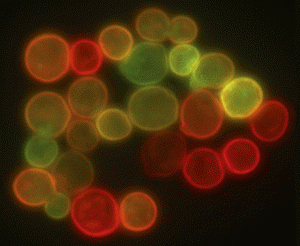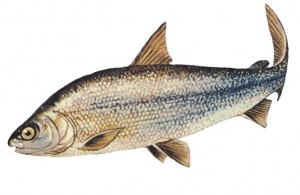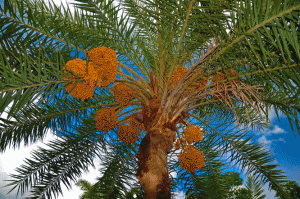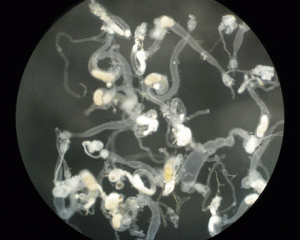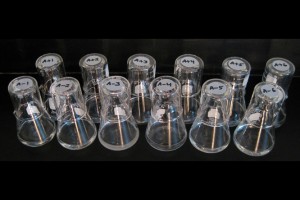Enter your address to receive notifications about new posts to your email.
Articles tagged G3 Journal
(197 results)
-
Frog fungus gets lazy in the lab
Amphibians around the world have been devastated by the spread of the deadly fungus Batrachochytrium dendrobatidis (Bd). But although many populations have been decimated, others have survived the same threat. One reason for such different outcomes is variation in virulence between Bd isolates. In the latest issue of G3, Refsnider and Poorten et al. investigate…
-
New in G3: association mapping, amino acid usage, and appendage development
Check out the October issue of G3! Meeting Report Meeting Report on the Challenge of Inference from Genome to Phenome Bevan Emma Huang, Antonio Reverter, Ian Purvis, and Scott Chapman G3 October 2015 5:1945-1947; doi:10.1534/g3.115.019182 Full Text | Full Text (PDF) | Supporting Information Investigations Endogenous Small RNA Mediates Meiotic Silencing of a Novel DNA Transposon…
-
Exome sequencing: Giving researchers more bang for their buck
Over the last decade, advances in next-generation sequencing technology have given rise to many findings increasing our understanding of human disease and natural variation within species. Sequencing of the exome, the small fraction of the genome encompassing all exons of protein coding genes, has gained popularity as an inexpensive alternative to sequencing the entire genome.…
-
New in G3: transcriptomics, temperature-sensitive yeast, and TALENs
Check out the September issue of G3! Investigations SWEEP: A Tool for Filtering High-Quality SNPs in Polyploid Crops Josh P. Clevenger and Peggy Ozias-Akins G3 September 2015 5:1797-1803; Early Online July 6, 2015, doi:10.1534/g3.115.019703 Abstract | Full Text | Full Text (PDF) | Supporting Information Comparative Transcriptome Analysis of the Cosmopolitan Marine Fungus Corollospora maritima Under Two…
-
Members of GSA community elected to ASHG Board
Two members of the GSA community have been elected to the Board of Directors of GSA’s sister society, the American Society of Human Genetics (ASHG): Nicholas Katsanis, PhD Jean and George R. Brumley Professor of Cell Biology and Pediatrics Director, Center for Human Disease Modeling Duke University School of Medicine Associate Editor, G3: Genes|Genomes|Genetics Sarah…
-
Speeding up PCD diagnosis with whole-exome sequencing
Primary ciliary dyskinesia (PCD) is a disorder characterized by chronic respiratory distress that has a history of going undiagnosed. Combined whole-exome sequencing (WES) and copy-number variant (CNV) analysis can aid in diagnosing patients with PCD, according to research published in G3 this month. PCD arises from mutations in cilia-associated genes—and results from the paralysis of…
-
New in G3: CRISPR, C. elegans, & a ciliopathy
Check out the August issue of G3! Perspectives Exome Sequencing: Current and Future Perspectives Amanda Warr, Christelle Robert, David Hume, Alan Archibald, Nader Deeb, and Mick Watson G3 August 2015 5:1543-1550; Early Online July 2, 2015, doi:10.1534/g3.115.018564 Full Text | Full Text (PDF) Investigations Identification of Wnt Pathway Target Genes Regulating the Division and Differentiation of…
-
Multiple Paths to the Same Result: Parallel Evolution in Lake Whitefish
For Lake Whitefish, history has repeated itself. Across the St. John River region that spans Québec and Maine, these freshwater fish have continually evolved in the same way. Within the many individual lakes in this area, Lake Whitefish have diverged into two groups differentiated by size and body shape. These two groups, known as “dwarf”…
-
A “date” with the history of Phoenix dactylifera cultivation
The sticky fruit of the date palm has a tangled history. New research in G3 explores the palm’s genetic diversity and traces its earliest cultivation to at least two distinct regions in North Africa and the Arabian Gulf. The date palm (Phoenix dactylifera) is one of the world’s oldest cultivated trees and has close ties…
-
New in G3: peanuts, peas, & dates
Check out the July issue of G3! INVESTIGATIONS Multiple Conserved Heteroplasmic Sites in tRNA Genes in the Mitochondrial Genomes of Terrestrial Isopods (Oniscidea) Christopher H. Chandler, Myriam Badawi, Bouziane Moumen, Pierre Grève, and Richard Cordaux G3 July 2015 5:1317-1322; Early Online April 24, 2015, doi:10.1534/g3.115.018283 Abstract | Full Text | Full Text (PDF) | Supporting…
-
G3 Meeting Report: Experimental Approaches to Evolution and Ecology Using Yeast and Other Model Systems
Directly observing evolution in nature is often impossible. But biologists who use experimental systems to study these processes have the luxury of observing the fine details directly, controlling the conditions, and even replicating the results. In the age of genomics, experimental approaches to ecology and evolution have become particularly powerful for genetic model systems, including…


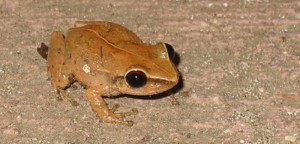
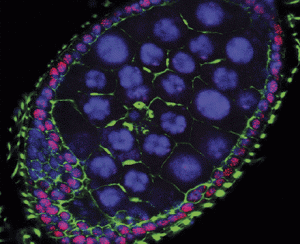



![By Louisa Howard, Michael Binder [Public domain], via Wikimedia Commons" width="666" height="532" />](https://s36063.pcdn.co/wp-content/uploads/2015/09/Bronchiolar_area_cilia_cross-sections_1-300x240-300x240.jpg)
